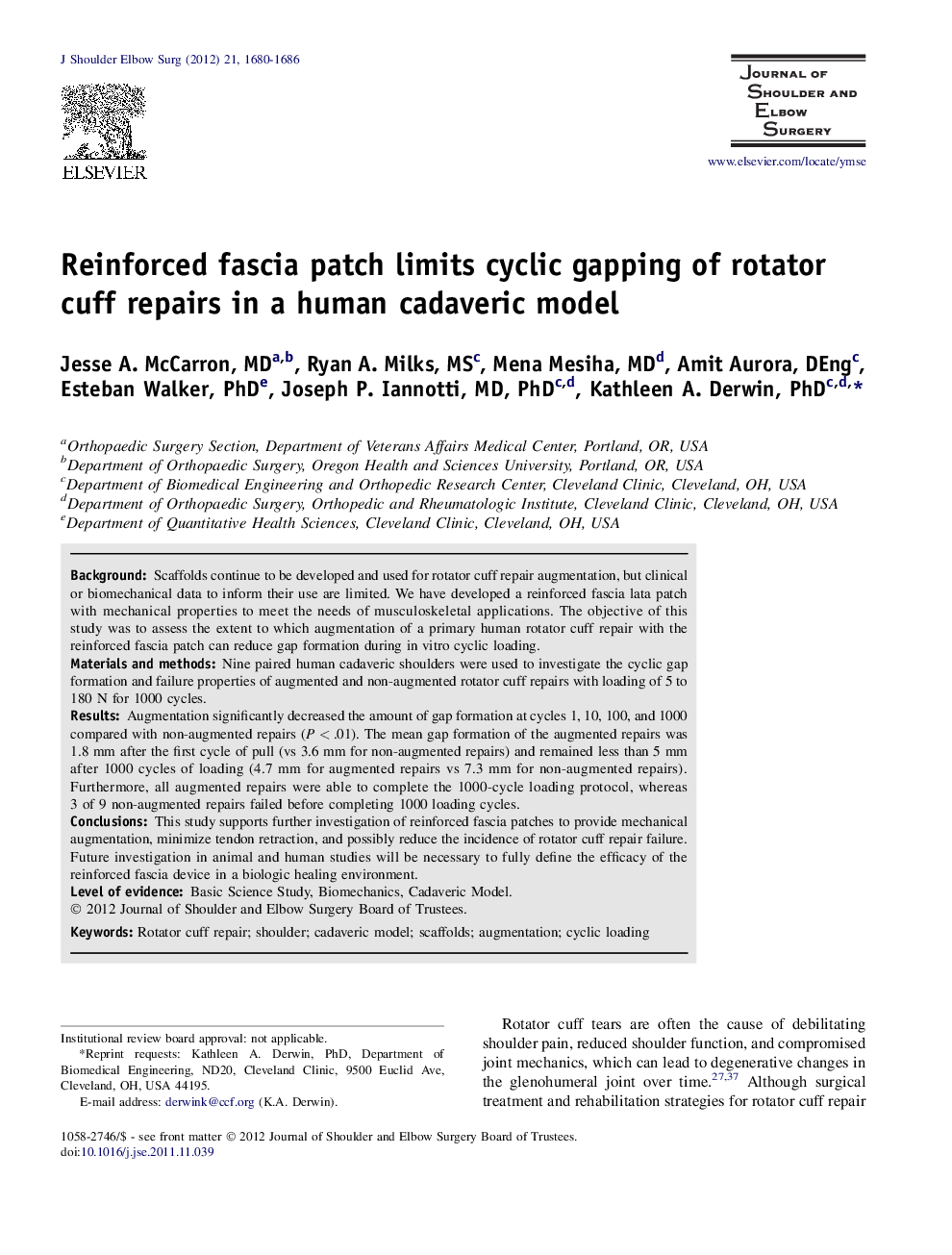| Article ID | Journal | Published Year | Pages | File Type |
|---|---|---|---|---|
| 4073838 | Journal of Shoulder and Elbow Surgery | 2012 | 7 Pages |
BackgroundScaffolds continue to be developed and used for rotator cuff repair augmentation, but clinical or biomechanical data to inform their use are limited. We have developed a reinforced fascia lata patch with mechanical properties to meet the needs of musculoskeletal applications. The objective of this study was to assess the extent to which augmentation of a primary human rotator cuff repair with the reinforced fascia patch can reduce gap formation during in vitro cyclic loading.Materials and methodsNine paired human cadaveric shoulders were used to investigate the cyclic gap formation and failure properties of augmented and non-augmented rotator cuff repairs with loading of 5 to 180 N for 1000 cycles.ResultsAugmentation significantly decreased the amount of gap formation at cycles 1, 10, 100, and 1000 compared with non-augmented repairs (P < .01). The mean gap formation of the augmented repairs was 1.8 mm after the first cycle of pull (vs 3.6 mm for non-augmented repairs) and remained less than 5 mm after 1000 cycles of loading (4.7 mm for augmented repairs vs 7.3 mm for non-augmented repairs). Furthermore, all augmented repairs were able to complete the 1000-cycle loading protocol, whereas 3 of 9 non-augmented repairs failed before completing 1000 loading cycles.ConclusionsThis study supports further investigation of reinforced fascia patches to provide mechanical augmentation, minimize tendon retraction, and possibly reduce the incidence of rotator cuff repair failure. Future investigation in animal and human studies will be necessary to fully define the efficacy of the reinforced fascia device in a biologic healing environment.
